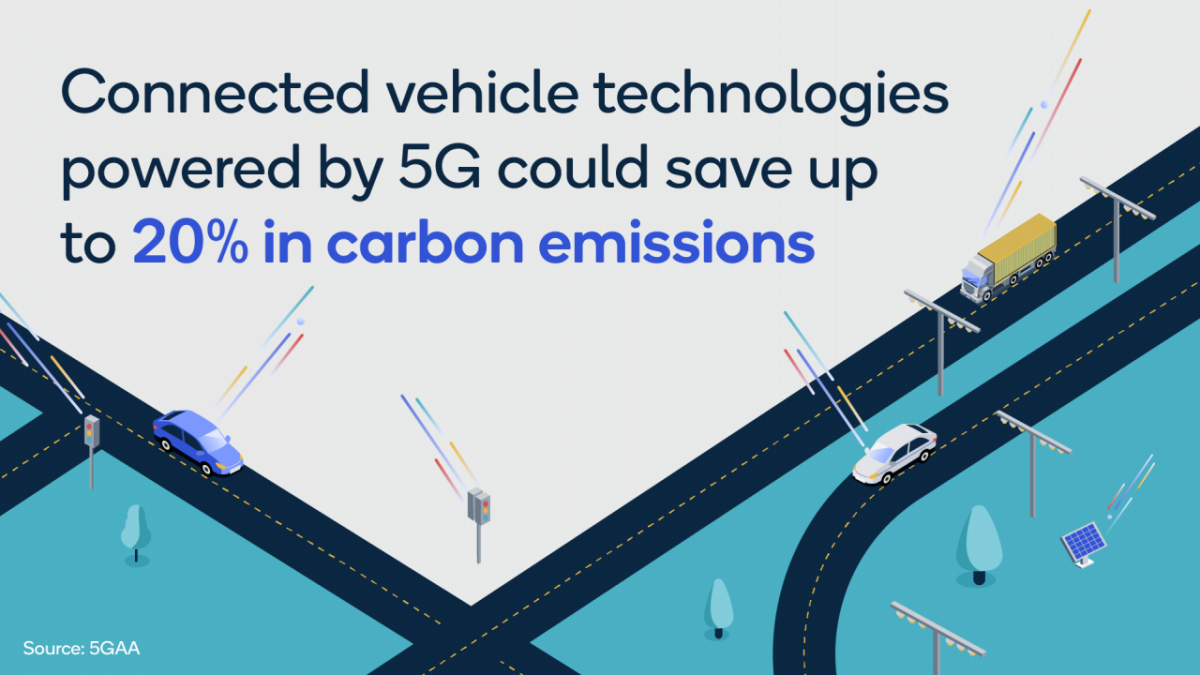Why 5G Is Crucial in Achieving a More Sustainable Future

5G has the potential to help the world become more environmentally sustainable with technology that can reduce negative impacts caused by various sectors.
What this means: These new networks’ high speed and reliability can help lower greenhouse gas emissions, better manage electricity, reduce water consumption and contribute to green job growth.
- Accenture’s “The Impact of 5G on the United States Economy” reports that 5G is expected to create or transform up to 16 million jobs across the U.S. economy.
- Many of these new jobs, according to Qualcomm Incorporated’s head of Corporate Responsibility and Sustainability Angela Baker, will be associated with services and industries — like manufacturing, agriculture and transportation — that will have a positive impact on the environment and reduce pollution.
Qualcomm’s 5G breakthrough technologies are expected to help industries such as manufacturing, farming and transportation cut back on their carbon emissions and improve their environmental sustainability.
Here’s how:
Transportation could become smarter, safer, greener and faster with the adoption of 5G.
The background: Many governments are looking at the potential of 5G to lower greenhouse gas emissions by reducing traffic jams, improving traffic control, ensuring cars are running efficiently and optimizing public transportation.
Why it’s important: Evidence shows that connecting vehicles to their surroundings — such as to other vehicles, infrastructure and pedestrians — could save anywhere from 15-20% in carbon emissions.
- It also has the potential of reducing the severity of non-impaired accidents by up to 80% — reducing traffic by possibly 25%.
5G is also expected to help make smart farms more efficient and sustainable.
Why it’s important: The agriculture industry accounts for approximately 80% of water consumption in the U.S., according to the U.S. Department of Agriculture.
Sensors and monitoring devices paired with 5G help farmers remotely monitor and control their water usage effectively.
- These technologies ensure that crops are not being over-watered, thereby reducing the farm’s water consumption, improving its crop yields and increasing efficiencies.
Smart factories powered by 5G and IoT have efficiencies built in.
- Qualcomm’s 5G breakthroughs can provide manufacturers better visibility, management and control over their energy consumption.
- This can help factories reduce carbon emissions.
5G’s sustainable influence can touch many in the value chain, including end users.
- For example, products like Always On, Always Connected PCs don’t need to be charged as often as regular devices, helping users reduce their energy consumption.
- 5G fridges could also help reduce a home’s food waste by providing alerts of when food is about to go bad.
What Qualcomm is saying: 5G is going to be a game-changer in helping mitigate the effects of climate change.
- But to reap the benefits the U.S. needs to adopt regulatory frameworks for smart and sustainable mobility for the deployment of 5G.
- The country needs to boost investments in infrastructure and 5G, from the federal level down to the local level.
The takeaway: Qualcomm is leading the expansion of 5G to meet these societal needs.
- “5G can help enable a more sustainable future by providing higher speeds and allowing us to do much more than we’re able to do now,” said Baker.

